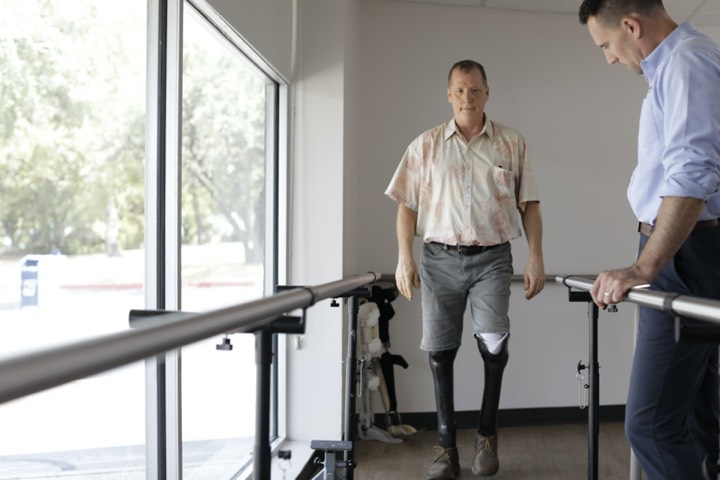Can Most People Walk Again With Prosthetics for Both Feet
Learning to Walk with a Prosthetic Leg

It is normal to feel nervous as you are being fit with a prosthetic leg and learning how to walk again. Remember that the process takes time and patience as you work to gain the strength, flexibility, and confidence needed to become comfortable with using a prosthesis in your daily life.
Proper Fit and Maintenance
The most important part of any prosthetic leg is the design and fit of the socket. A secure, comfortable fit between the residual limb and prosthesis is important for proper control and comfort. We are proud to offer the ComfortFlex™ Socket System, which is custom fit to the residual limb and contoured to the shape of the remaining bone and muscles, helping to improve the overall health of the residual limb while also providing a comfortable fit…
Proper maintenance of your prosthesis is also important for maximum comfort. This includes regularly cleaning the socket area to prevent any skin irritation. Discuss the specific cleaning process with your clinician during the fitting of your prosthesis.
Learning to Walk with Parallel Bars
Once your socket is properly fit and comfortable, you'll need to learn how to transfer some of your weight onto the prosthesis. We naturally shift the weight of our bodies when we walk, and proper weight transfer is vital to mastering how to walk again. Most people have trouble feeling secure enough to put their full weight onto a prosthesis (or prostheses) at first, but with proper instruction from your physical therapist and lots of practice, you will learn how to safely put more weight onto your prosthetic leg(s).
When learning to walk with the help of parallel bars, you'll begin by using both arms for support. Over time, you will reduce your reliance on the parallel bars, walking with only one arm on the parallel bar, and eventually walking comfortably with little or no support from your upper body. The process is different for everyone, and often takes more time for individuals with above-knee amputations or bilateral amputations. Just remember to take it slow at first, and to practice frequently for short periods of time.
Tips for Walking
When you start walking on your own, it's important to use any aids your therapist or doctors recommend. It is much better to progress slowly than to rush the process and injure yourself.
When you're starting out, you should also pay extra attention to the width of your foot placement and your step length. Aim for a width of about two to four inches from one heel to the other heel. It may feel like a wider stance will make you more stable, but it will also require more energy to maintain, and it should be a balance between stability and energy expenditure. For step length, heel to toe is a safe starting point. You'll gradually increase this as you become more comfortable and confident.
Once you are walking in everyday situations, you will start encountering more challenging situations, like navigating stairs, curbs, hills, and uneven surfaces. Depending on your specific needs, your therapist will guide you on the most efficient way to navigate through these daily life situations.
Advanced Exercises
Once you're comfortable walking again, you should continue developing your skills. Make sure you start by using something to hold on to for support until you are confident with each of these exercises.
You can try:
- Bouncing a ball standing in place and then walking
- Balancing on one leg
- Balancing a tall stick on your hand while standing in place
Later, you'll want to experiment with more practical exercises:
- Walking on different surfaces such as carpet, pavement and uneven terrain
- Falling down and getting up
- Getting in and out of a car
- Carrying items while walking
Remember, while progress may be slow, don't get discouraged. It is only natural to have some muscle soreness when you begin using a prosthesis, as your body is adapting to a new way of walking. However, if you experience any pain or serious discomfort, always consult your clinician.
Connect with Your Peers at Events
Our events are a great place to learn practical ways to move with a prosthetic leg.
Upcoming Events >
robinsonyouldrals.blogspot.com
Source: https://hangerclinic.com/blog/lifestyle/learning-to-walk-with-a-prosthetic-leg/
0 Response to "Can Most People Walk Again With Prosthetics for Both Feet"
Post a Comment